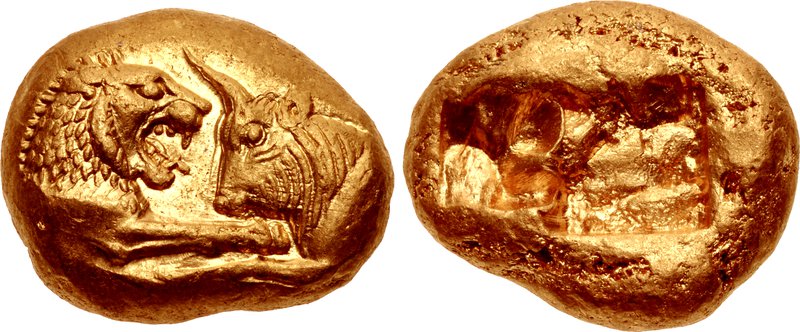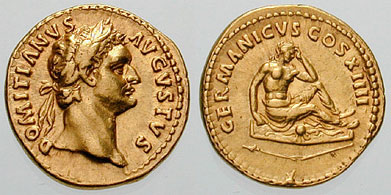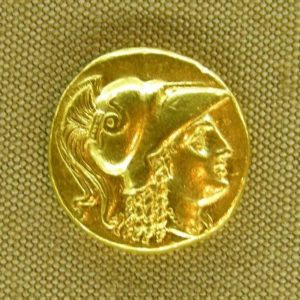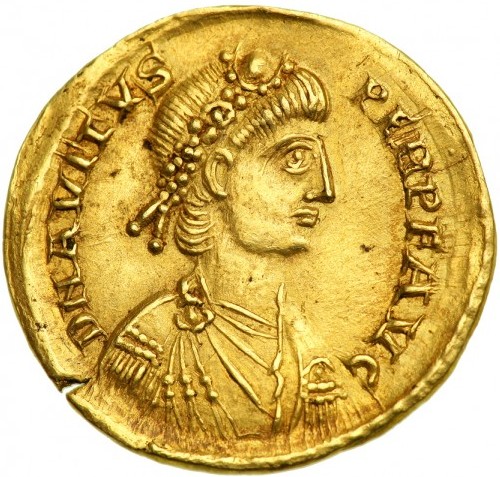View historical precious metals price charts »
View historical precious metals price charts »
- May 20, 2022 -
By Lisa Murray-Roselli
Gold has captured people’s imagination since its discovery. In ancient times, it was believed to have been a dense melding of sunlight and water, a mystical creation associated with deities, beauty, and power. Gold can be found all over the world and, as such, it is valued by a vast array of cultures. Its physical properties (easy to melt and mold) also made it an ideal substance for creating jewelry, ritual objects, household items for the wealthy, statuary, and coins.
The first recorded use of gold as money was in 700 BC. However, these bits of gold were irregular in size, shape, and weight. When “clipped” into coins, the face value of the coin sometimes surpassed the actual value of the gold itself. Around the world, everything from shells, to feathers, to grain were being used as a form of money. As global trade expanded, a common, standardized form of currency was needed.

By Classical Numismatic Group, Inc. http://www.cngcoins.com, CC BY-SA 3.0, Link
According to historians, the first coin issued by a nation’s government was the Lydian Stater, the official coin of the Lydian Empire (modern day eastern Turkey). The stater was made from a naturally-occurring alloy called, “electrum,” which is composed of gold and silver. The Lydian’s strengthened the electrum by adding metals to it so that the balance was roughly 55% gold to 45% silver. To give it a more golden shine, a bit of copper was sometimes added. It is believed that these coins were introduced during the reign of King Alyattes, who was sovereign from 619-560 BCE. Although raw electrum stater coins were in circulation prior to this time, this was the first time coins were produced that were of a standardized composition, weight, and shape. Importantly, this was also the first time that a coin was stamped with the marking of its country of origin.
The coins were minted in Sardis (or Sardes), the Lydian capital, with the foreparts of a lion (on the left) and a bull (on the right) facing one another. Smaller coins used only the right-facing lion with a sunburst at the top. Created by a punch and bearing Assyrian symbolism and the Lydian lion, these coins were the unmistakable tender of the Lydian kingdom and its ruler. This approach to minting coins soon caught on within the kingdoms and empires that traded with Lydia, particularly in Anatolia and Hellas (Greece).
Croesus of Mermnadae, the last king of Lydia (560-546 BC), further refined the practice. By this time, through highly successful trading, Lydia had accumulated large stores of gold. Croesus ordered the creation of coins that were made of pure gold and silver, unlike the popular “electrum” coins of the day. These coins had the advantage of a more definite intrinsic value because of their underlying metals, whereas electrum’s worth was more difficult to calculate owing to their mix of metals. They were also broken into fractional denominations, the most common, the third-stater, or trite, was one-third the weight of the stater. Additionally, there were sixth-staters, twelfth-staters, as well as staters in fractions of 1/24, 1/48, and 1/96.
The coins of Lydia had all of the necessary ingredients for a successful form of currency: they were durable, transportable, divisible, the metal of composition was scarce and had intrinsic value, and they were clearly marked with the symbology and likenesses of their place and ruler of origin. These gold and silver creosid (after Croesus) coins also gave rise to a stable exchange rate. The gold staters weighed 126 grains and the silver staters weighed 168 grains. In this manner, a convenient exchange rate of ten silver staters to one gold stater was established.
The result of this exchange standard meant that the coinage could be used internationally. Croesus was insightful and shrewd when it came to pushing the boundaries of trade—he made sure that his country took the lead and reaped the benefits. This uniform exchange rate based upon the Lydian stater helped to widen Lydia’s influence through the territories on the west coast of Asia Minor.
Croesus’ reign came to an end when he was captured by the Persians in 546. The Persians eventually began to use gold as the primary metal in their coins and the daric, named after Darius the Great (521-486 BC), became their standard gold coin currency. The daric was nicknamed “Archer” because it bore the image of the warrior king holding a bow and arrow, and became widely known throughout the ancient world.

File:Rome Aureus Domitianus 89.jpg” by Unknown author is licensed under CC BY-SA 3.0

Alexander the Great, coin of Macedonia, 336-323 BC, Archaeological Museum, Pella” by Following Hadrian is licensed under CC BY-SA 2.0
Although the Lydian stater and, later, the Persian daric, dominated the coin currency of the ancient world, other nations and sovereignties produced coins of their own. Coins of ancient Greece (or Hellas), some with the head of Athena on one side and the owl of Athens on the other, were widely used. Alexander the Great of Macedonia increased the quantity and uniformity of Greek coinage, including gold coins, pushed this style of currency through the Balkans to Europe, and influenced coin-making in Gaul and Britain through the 1st century BCE.
Coins of the Roman Empire were mainly composed of silver, bronze, and alloys until the advancement of gold mining science. The Roman Emperor Augustus (31 BCE-AD 14) issued a coin called the “aureus” (from the Latin word for “golden”), which spurred and expansion of the Roman economy. In AD 310, Constantine the Great issued a new gold coin, the “solidus,” which standardized coin imagery: portraits of rulers, Christian symbols, and pagan subjects. Christianity fueled changes in the imagery used on the coins of other, converted kingdoms. Egypt and other African sovereignties, India, and China were also known to have used gold coins as part of their currency.

File:Solidus Avitus Arles (obverse).jpg” by Numismatica Ars Classica NAC AG is licensed under CC BY-SA 3.0
Gold has never lost its allure. It has inspired exploration, conquering armies, scientific invention, and artists of all kinds. While we no longer use gold coins as a common currency, or base our paper money on a gold standard, gold, in all of its forms, remains highly sought-after and valuable.